Style’s editors and writers recommend their favorite books that feature Florida connections. We hope you’ll enjoy these books as much as we did!
 1. Last Train To Paradise
1. Last Train To Paradise
Les Staniford
If you’ve ever driven A1A to Key West and looked to your east as you traveled along the Seven-Mile Bridge, you’ve seen the remnants of an old train track and trestle bridge now used for a fishing pier. The structure just stops halfway out in the middle of the Florida Strait. I always wondered about that abrupt ending until I read Standiford’s gripping true account about the construction and eventual demise of the Florida East Coast Railway’s Key West Extension, one of this country’s greatest engineering feats.
Also known as the Overseas Railroad, it was one of Henry Flagler’s crowning achievements and was described as “the Eighth Wonder of the World.” Although the railroad stood for 22 years through America’s Gilded Age, it did not survive the 1935 hurricane that was called the Storm of the Century.
If you’ve never read about Flagler and his vision—or his ambition—for the Sunshine State, the Last Train to Paradise is a fast-paced read that will give you insight about the entrepreneur whose contributions brought Florida into the 20th century.
—Mary Ann DeSantis, associate editor
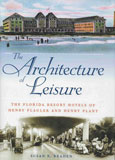 2. The Architecture of Leisure
2. The Architecture of Leisure
Susan R. Braden
If I’m not reading contemporary fiction, I’m usually reading something about the history of this area. This is a fascinating book about Henry Flagler and Henry Plant, who basically introduced tourism to the state. Some of the hotels built by these two visionaries are still around. If you love local history, you’ll be fascinated by the way these men learned to cater to their very wealthy clients and introduce them to the tropical lifestyle that many still embrace today.
A skillful writer, Braden gives you all the inside details on the Flagler and Plant hotels, from start to finish and through their years of business. She uses actual blueprints, an array of archival resources, and even memoirs written by hotel visitors. For those who would rather look than read, there are a great many floor plans, illustrations, and photos that give you a captivating look into the personal and professional lives of the two men who practically invented the vacation getaway.
—Leigh Neely, contributing writer
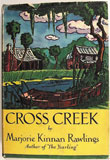 3. Cross Creek
3. Cross Creek
Marjorie Kinnan Rawlings
While I’ve read many of Marjorie Kinnan Rawlings’ works of fiction, including some of her marvelous short stories, I seem to be drawn to Cross Creek more often than any of her other writings. I’ve read it most winters for the past decade.
I’m not really sure why. All of her books have memorable characters, plenty of local color, and lovely descriptions, but I think I prefer Cross Creek because it has something the others don’t have—Marjorie’s story.
At that time, for a woman to come into the wilds of Central Florida to set up a homestead would’ve been revolutionary enough. But when Marjorie also chose to not be inhibited by any boundaries—socially, physically, and environmentally—and instead to inhabit a “man’s” world, she herself became a character richer than any that could exist on the page.
—Dean Blinkhorn, editor-in-chief
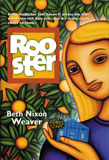 4. Rooster
4. Rooster
Beth Nixon Weaver
Set in 1969 rural Florida, 15-year-old Kady and her family are struggling to make ends meet with their failing citrus grove. Her next-door neighbor, a mentally disabled boy nicknamed Rooster, looks up to and admires Kady. Rooster calls her Madrina, the Spanish word for Godmother. Like many teenagers though, Kady doesn’t appreciate what she has and wants a better life, one that involves money and material things—one without the constant attention of Rooster. Then her dreams begin to come true.
One of the richest boys in school makes her his girlfriend, she joins the popular kids in school, and she’s able to buy new clothes. But when tragedy strikes close to home, Kady realizes what’s truly important in life.
For her first novel, Beth Nixon Weaver touched on it all—suspense, humor, and sadness. The characters are richly developed and extremely believable. I found myself laughing and crying right along with them. Even though this book might be aimed toward the teenage set, it’s an enjoyable read for anybody interested in a book that tells a good story.
—Karin Fabry-Cushenbery, associate editor
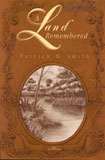 5. A Land Remembered
5. A Land Remembered
Patrick D. Smith
Thanks to my son’s fourth-grade teacher, I was introduced to Patrick D. Smith’s tale of Florida pioneers who faced the hardships of living the frontier life in the late-1800s. A two-volume series, Smith introduces the MacIvey family who arrives in the Florida wilderness with hopes and dreams of a brand new life. Of course, nothing quite works out as planned for the MacIveys, who learn to live off the land of scrub, cattle, and hard knocks.
My son enjoyed this book so much that he inspired his dad to read along. They eventually read both the student and adult versions and, if you ask either Mangan each will say this was one of the most meaningful father-son books they’ve read together.
The state of Florida likes it, too, having put A Land Remembered on the official reading list of the Sunshine State Standards.
—Amy Mangan, associate editor
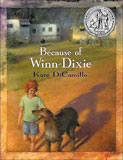 6. Because of Winn-Dixie
6. Because of Winn-Dixie
Kate DiCamillo
Speaking of parent-child read-alongs, this is a favorite of mine and my daughter’s. A 10-year-old girl named Opal adopts a scruffy dog whom she finds in a Florida grocery store which is, you guessed it, Winn-Dixie. Both Opal and Winn-Dixie learn to adapt to a new life in a strange state (yes, that would be Florida) where life deals them their fair share of heartache and love.
Kate DiCamillo vividly re-creates a southern town feel with the idiosyncratic cast of characters, landmarks, and Deep South culture. Reading this book was like a visit with a familiar neighbor. Granted, the novel isn’t an intricate story line of complex themes, but enough to strike the right tone as a young adult book that can easily be enjoyed by adults, too.
—Amy Mangan, associate editor
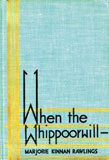 7. When the Whippoorwill
7. When the Whippoorwill
Marjorie Kinnan Rawlings
Around 1986, I checked out a copy of When the Whippoorwill by Marjorie Kinnan Rawlings from a UF library. Published in 1940 between Rawlings’ most famous titles (The Yearling, 1938, and Cross Creek, 1942), Whippoorwill is a collection of short stories including the well-known “Varmints” and “Gal Young Un.” Most of the stories in the book were first published in magazines during the 1930s.
I loved the language, the subtle messages of right and wrong, and—most of all—the zany Florida cracker characters. For years, every time I heard a whippoorwill sing, I thought of Rawlings’ book. I wanted my own copy, but the book had been out of print for many years. Browsing through an old flea market in South Atlanta during the late 1990s, I unexpectedly found a pristine first edition of When the Whippoorwill for $20, and today it occupies a place of honor on my bookshelf. A similar copy now sells for $119 on Amazon.com.
The title is derived from an old Florida expression, “When the first whippoorwill calls, it is time for the corn to be in the ground,” an appropriate expression for the characters who make up this delightful read. I like to think that when the whippoorwill calls, it’s to remind us that Florida is a unique environment that we should appreciate and protect so that we’ll always hear the whippoorwill’s unique song.
—Mary Ann DeSantis, associate editor
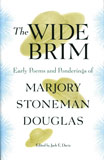 8. The Wide Brim Hat: Early Poems and Ponderings of Marjory Stoneman Douglas
8. The Wide Brim Hat: Early Poems and Ponderings of Marjory Stoneman Douglas
Edited by Jack E. Davis
This is one of my favorite books to read when I want to lose myself in writings “from the heart.” Marjory Stoneman Douglas loved Florida, and she was never afraid to put that love into her articles and poetry. An environmentalist before it was politically correct, her most famous work was probably The Everglades: River of Glass.
Douglas also wrote fiction, poetry, and short stories along with her nonfiction books. Her daily column, “The Gallery,” ran in the Miami Herald from 1920-23, and most of the selections in this book are from those columns.
Equally at home writing about politics, nature, or women’s issues, she had a sharp wit that came out in delicious sarcasm and intelligent prose. I’d like to see her on some of today’s news talk shows. I believe she’d be right at home with the current social issues of the country and probably not at all surprised by what’s going on now.
A quote from one of her columns seems appropriate to close out this article: “Two hundred books are a drop in the bucket when you come to pick and choose. And yet people are constantly clamoring for a list of 10 best books or 50 best books, to make up their library. How can they? The more I try to pick out 200, the more I realize that it is impossible to standardize a thing that depends so much on personal needs. Heavens, I could cheerfully make up a library of 1,000 and then find a lot the very next day that I simply couldn’t wait to read.”
—Leigh Neely, contributing writer
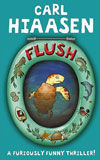 9. Flush
9. Flush
Carl Hiaasen
I may be over 30 now, but I still love to read young adults books (think Harry Potter and Eragon). I think they’re much more original and creative than books aimed at adults which, in my opinion, often lack imagination. That said, there aren’t many books out there that appeal to both the seasoned reader and the younger set. Lucky for us, Flush by Carl Hiaasen is one of those books.
I first learned of Hiaasen from a co-worker and her daughter. I’ve been a fan ever since and have added several of his other titles to my personal library.
In Flush, Hiaasen uses crazy characters and clever dialogue to tackle a tough environmental subject—illegal dumping. Noah’s father is sure the owner of the most popular casino boat is dumping raw sewage into his precious Florida waters. Unable to prove it, he takes drastic measures and ends up behind bars. Young Noah and his sister, Abbey, decide to take matters into their own hands to prove their father’s theory and expose the Coral Queen casino boat.
A recurring theme in many of Hiaasen’s novels is environmental awareness, a topic very much in the headlines these days. However, he approaches the subject in a way that is educational, humorous, and entertaining.
—Karin Fabry-Cushenbery, associate editor
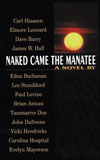 10. Naked Came the Manatee
10. Naked Came the Manatee
Dave Barry, Carl Hiassen, et. al.
When you combine humorist Dave Barry with nationally recognized columnist Carl Hiassen, literary satire is a guarantee. Add 11 more prestigious writers (like Elmore Leonard) and you’re in for a hilarious treat. Originally published as a serial novel in the Miami Herald’s Tropic magazine, Naked Came the Manatee is a writer’s feast with each writer contributing a chapter with wide open cliff-hangers for the next chapter.
The result?
A crazy and mercurial plot with more intricate and dysfunctional characters than a soap opera. Yet, it works. Central to the story is a very wise manatee who helps resolve a South Florida murder mystery, no thanks, however, to most of the bumbling individuals who are introduced in this novel that took 13 weeks to create from start to finish. Although published in 1998, I continue to consider this book a great example of editorial collaboration mainly because the book is just downright funny. At the conclusion of each chapter, I remember thinking, “How in the world can the next writer tie it all together?” But, tie it they did in a brilliant piece of fiction that captivates the reader from the first chapter by Dave Barry to the wild conclusion by Carl Hiassen.
—Amy Mangan, associate editor
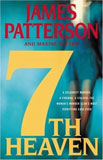
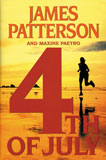 11. The Women’s Murder Club Series
11. The Women’s Murder Club Series
James Patterson
Lindsay Boxer, Cindy Thomas, Claire Washburn and Jill Bernhardt are the founding members of The Women’s Murder Club, another entertaining series from James Patterson. These women, a cop, a reporter, a medical examiner, and an assistant district attorney, get together to solve crimes in San Francisco. Like many women, they discuss their adventures over Mexican food at their favorite restaurant, Susie’s. This series has become so popular that it’s now a TV series, which began with the new fall season.
I do enjoy great literature, but I have to admit, most of my reading time is filled with contemporary fiction. A great many Florida writers are among my favorites, including Dave Barry, Edna Buchanan, Lisa Miscione, and, obviously a favorite for many of us on the Style staff, Marjorie Kinnan Rawlings.
—Leigh Neely, contributing writer
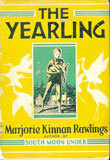 12. The Yearling
12. The Yearling
Marjorie Kinnan Rawlings
No Florida book list is complete without mention of this beloved masterpiece by Marjorie Kinnan Rawlings. I dug up my old copy from middle school after an inspiring visit to the author’s house in Cross Creek a couple of years ago and quickly remembered why I had loved it so much as a youngster. It’s a timeless tale and quintessentially Floridian.
The story of 12-year-old Jody Baxter, his pet fawn Flag, and their adventures and trials on a Florida farm in the late 1800s is equal parts heart-warming and heart-wrenching. Rawlings is masterful in her depiction of life in Florida’s backcountry, a unique culture she saw first-hand living on her Central Florida citrus grove. The lessons Jody learns about love, loss, and responsibility ring true to readers still today, 70 years after the book’s publication. This is a must-read for every Floridian and a personal favorite.
—Kristina Kolesa, editorial assistant
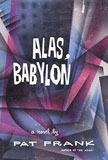 13. Alas, Babylon
13. Alas, Babylon
Pat Frank
I recently re-read this Cold War classic in 2004 during the series of hurricanes that seemed to have drawn a bull’s-eye on Central Florida. The fact that we were without power for days and were enduring—in small doses—some of what Frank’s characters were going through during their post-nuclear landscape seemed to draw me even closer to them. Add to that the fact that much of Alas, Babylon occurs in Central Florida (although their town of Fort Repose was fictional), and this is a book that every local should read.
I finished it before our power came back and I’m glad I did. I wanted my temporary discomfort to set the tone for reading this fabulously told story. I wanted to be put out—after all, the characters in the book had no chance of their power returning, probably in their lifetimes. Their struggle was an everyday one for the basics of life—food, water, and shelter—but somehow the near destruction of humankind brought them all closer together.
When my power returned within the week, sure, I had 72 channels of cable TV, air-conditioning, and all the comforts of modern life again. But thanks to a fresh re-reading of Alas, Babylon, I also had a newfound appreciation of how lucky we all are.
—Dean Blinkhorn, editor-in-chief






